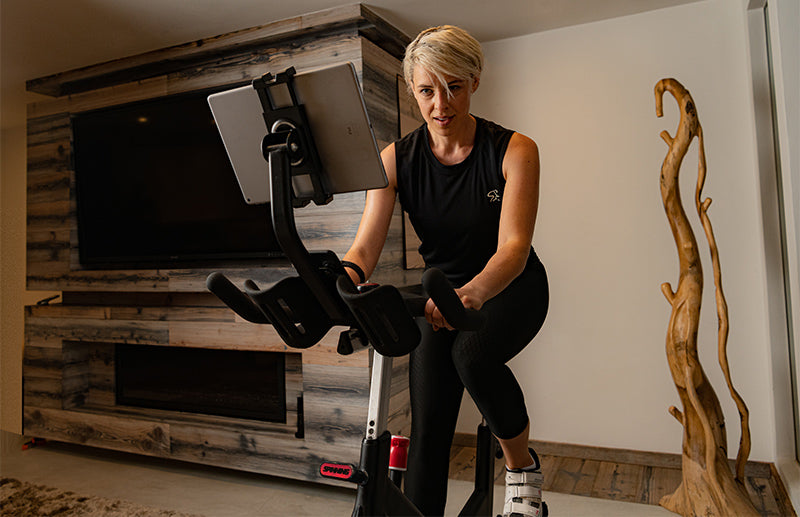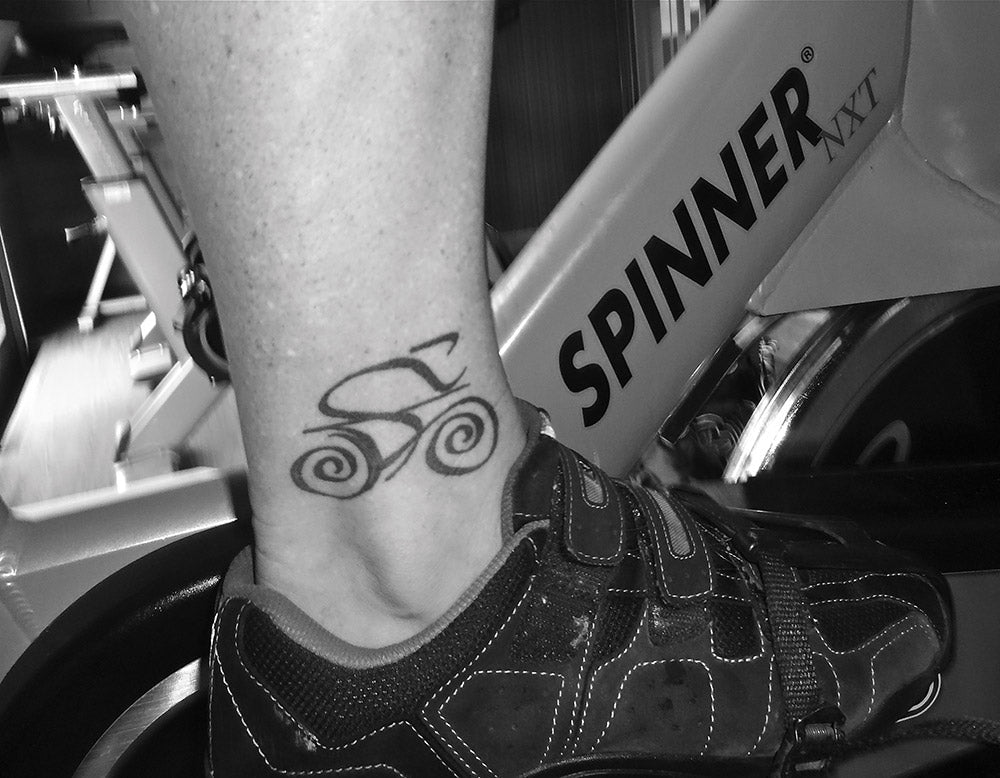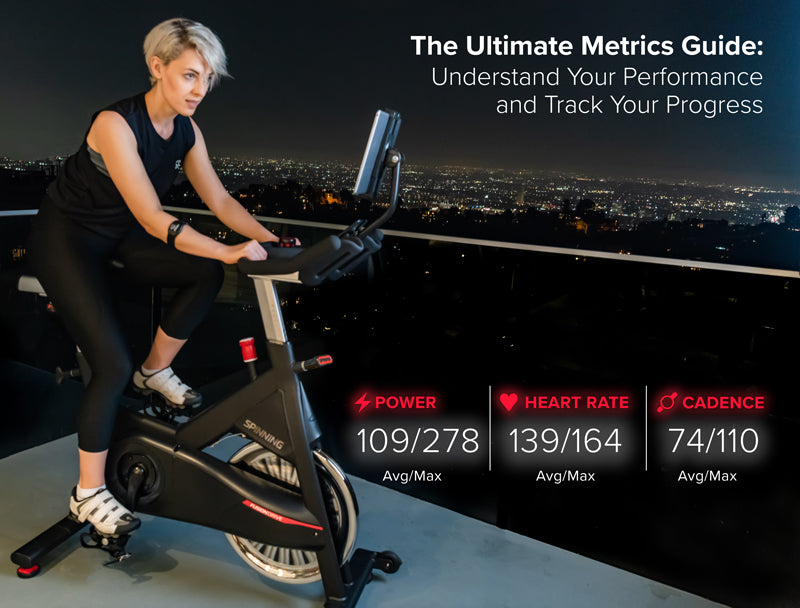As the Spinning® program gains popularity, instructors are continually challenged to coach students of varied abilities—cyclists, non-cyclists, people completely new to fitness and everyone in between.
There is a curious difference between cyclists and non-cycling Spinning® students and their relationship to cadence (revolutions per minute (RPM) of the pedal cranks). Cyclists (outdoors) almost always have a cadence that is too low. On the other hand, Spinning® students who don’t ride outside (and even some who do) often ride at a cadence that is too high. Take a closer look at your classes: What is the average cadence? Chances are many of your students are flying at 100-120 RPM or more. Is this helping them get and stay in shape? For the cyclists in your classes, is this improving their potential on their bikes? Probably not.
One of my students was pedaling at a very high cadence (over 120 RPM). She was bouncing in the saddle, so I suggested she add resistance to slow down. After five or six turns, she finally added enough resistance to slow to 90 RPM. “There, that’s better,” I said. “Oh,” she replied, “You meant a hill.” When I responded that wasn’t a hill – that it was actually a flat road—my student was surprised.
Since she had always relied on the flywheel for momentum, she never learned to turn the pedals with resistance. Not surprisingly, after three years of taking regular indoor cycling classes, she hadn’t lost any weight or developed any strength or power in her legs to climb hills. She had been “ridden by the bike” instead of vice versa.
So why do Spinning® students seem to prefer riding at such high cadences? Simply put – it’s easier! While a cycling background isn’t a prerequisite to becoming a Spinning® Instructor, it is helpful for instructors to ride a road bike a few times to better understand cycling cadence. For example, pedaling at a cadence of 120 RPM on the road is extremely difficult to maintain (unless you are a highly trained cyclist). Similarly, riding a mountain bike on a flat road in a granny gear (the easiest gear that allows you to pedal up a steep hill), will not only get you nowhere fast, you’ll also bounce in the saddle the whole way there. Put simply, when outdoors, cyclists need an appropriate gear to propel the bicycle forward. Applying the same philosophy indoors, riders need to apply appropriate resistance on a Seated Flat to elicit desired performance and training goals.
Cyclist or not, it’s important that Spinning® Instructors and students understand the difference between indoor and outdoor cycling mechanics. Outdoor cycling presents a host of various elements that don’t exist indoors, the most important being the road and wind resistance. On a Spinner®, we simulate the road and wind with the resistance knob, but it is totally up to the student, through good coaching, to apply an appropriate amount of resistance to simulate the desired terrain.
What is appropriate? Studies have shown that a higher cadence is mechanically less stressful and leads to improved economy. In fact, elite cyclists often work on increasing their “preferred” cadence to somewhere between mid-to-high 90s (RPM). These parameters are echoed in the Spinning® Instructor Manual and are rooted in studies on the preferred cadence of elite cyclists, which are also echoed by numerous articles and cycling coaches worldwide. Studies have shown that the most efficient cadence on a flat road (outdoors) is between 80-100 RPM. Since there is both a motor learning and a physiological component to cadence, when riding indoors, cyclists should mimic the approximate cadence applied outdoors – or slightly higher—in order to train the neuromuscular component. Riding a Spinner® bike at high cadences with little to no resistance does not train the neuromuscular system to respond more quickly.
One of the most appealing features of the Spinner® bike and Spinning® program is that they allow riders of all abilities to personalize each ride to achieve individual training goals—even while training “solo” at home. By encouraging your students to stay within the cadence parameters of the terrain and apply appropriate resistance to the flywheel, your students will reap the full benefits of the program: leg strength, muscular endurance, speed, and over time, improved fitness. When they learn to turn the pedals themselves rather than let the flywheel do the work, they are more likely to achieve fitness and performance goals—including weight loss—that they may not have achieved otherwise.
|
Review of the Cadence Parameters in the Spinning® Instructor Manual: Flat Road: 80-110 RPM / Hills: 60-80 RPM Recommended Cadence Drills to use in Spinning® classes: These drills have two completely different objectives. One works on higher cadences while improving economy and pedaling technique in the saddle, and the other works on lower cadences and higher resistance while climbing. For best results, both drills should attempt to improve these skills while staying at an aerobic heart rate. 1. Preferred Cadence and Leg Speed
2. Leg Strength and Muscular Endurance
|
If you’re interested in monitoring your cadence more closely, you’ll want to check out our cadence sensors and then pair it with one of these two apps:
Spinning® Connect™ will help you to keep track of your metrics, including cadence, historically.
The Spinning® App, a video app, means you're not only riding along with the instructor, but you’re actually getting your individual metric feedback on screen!
Article originally written by Jennifer Sage, CSCS, CPT, who is a personal trainer and former Spinning® Master Instructor from Vail, Colorado.





Leave a comment
This site is protected by hCaptcha and the hCaptcha Privacy Policy and Terms of Service apply.